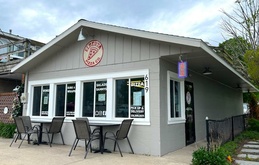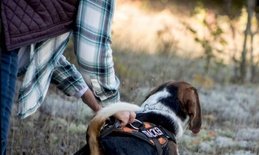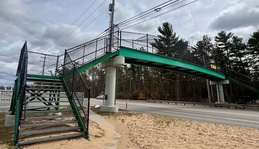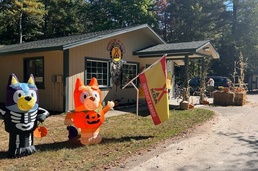The Revolution is Already Happening
A decade of online auto sales has changed the relationship between the dealer and the customer
Jan. 19, 2014

The Internet has all but killed newspapers, it’s forced record stores and bookshops underground, and it’s upended the sale of everything from televisions to clothing.
Could car dealerships, with their acres of vehicles and platoons of salespeople, be far behind?
Probably not, says Mike Marsh, an owner at Traverse City’s Bill Marsh Auto Group. But the in the future, physical dealerships will be less important and they might be a bit smaller.
"I think that the dealerships that are on high-cost, highvalue retail space, at the corners of large intersections, and main drags, will become less and less important," Marsh said. "You’re already seeing dealerships downsizing the size of their lots and their inventory."
That doesn’t mean we’re not in the middle of a revolution in how cars are bought and sold.
What has changed most, dealers say, is how much information consumers have before they walk onto the lot. That has shifted the balance of power between the customer and the salesperson and it’s caused dealers to reconsider their strategies.
CUSTOMERS GO ONLINE
Eighty to 85 percent of customers have been online before they come to the store, said John Cueter, division director of Fox Grand Traverse. He said Internet inquiries generate 25 to 30 percent of his dealership’s actual sales.
Kristin Hooper, Internet manager at Cherry Capital Cadillac and Subaru, said she estimates 90 percent of customers have been online before they visit, meaning shoppers know what’s for sale at Cherry Capital – and what’s offered down the road or on the other side of the state.
"It puts us in competition with dealerships hundreds of miles away," Hooper said.
Mike McFarlan, Cherry Capital general manager, said customers still want to come to the dealership; they’re just more informed when they arrive.
"At car dealerships, we’ve always talked about floor traffic and people coming in," McFarlan said. "The Internet today is your floor traffic."
A cold snowy morning at Cherry Capital was a prime example of that -- Hooper said she arrived to find 15 online sales leads in her inbox.
"I doubt we’ll have five people come in on a day like today, when it’s five degrees," Hooper said.
SHOP-CLICK-DRIVE 
Dealers agree we are closer to being able to complete a purchase online, but don’t expect that to be common any time soon.
Bill Marsh has rolled out a program called Shop-Click- Drive for its GM products. A hundred U.S. dealers tested it in 2013; some 900 cars were sold. Of those, GM said only five of the sales were completed online.
That’s in line with what Dana Pratt, e-business director at Bill Marsh, has experienced. An overwhelming number of car shoppers research online, but they want to come to the dealership before they buy.
"In the ideal world, you should be able to go online, pick a car, click, pay for it, and have it delivered to you, right?" Pratt said. "I am experiencing some inroads to that."
Because of state laws throughout the country, new car sales must go through dealers, so the dealer will be involved in some way for the foreseeable future.
In February, Subaru will enable customers to fill out a credit application on the Subaru website. Customers will be able to select and outfit a model, get financed, and do everything short of sign for the car.
"We can do almost everything by email outside of the final delivery," said Ryan Bremmeyr, dealer principal at Subaru By-the-Bay in Petoskey.
BETTER DEAL FOR AN ’08 IMPALA
Another advantage brought to consumers courtesy of the Internet is price transparency.
Dealers approach this in different ways. For some the listed price is firm; for others, it’s elastic. Some list a price online but ask you to contact the dealer to find out about a special deal.
Bill Marsh has offered transparent, no-negotiation pricing since 1997, something Mike Marsh believes puts them in a better position to compete online.
With so much information available, customers can figure out which used cars are priced too high and which are priced right, Marsh said.
"This idea of transparency in pricing, we’re not the only ones who are doing it at this point," Pratt said. "It’s kind of forcing the market to be true and fair about their pricing."
The result is price fluctuations for the same make and model of used car are in some cases thousands of dollars smaller than they would have been a decade ago.
"Lets say you’ve got an ’08 Impala and let’s say it’s an LTZ, which is kind of a higher model level. "¦ Before the Internet, the price range for that car could be, let’s call it, $5,000 to $6,000," Pratt said. "Now, with the Internet, you can’t price that car more than a thousand or two thousand, possibly, depending on where the car is and what market that it’s in and all of that."
DEALERSHIP BIDDING WARS
The Internet has added a new challenge for new car sellers, Bremmeyr said. Customers can go to one dealership, select and test drive a vehicle – and then go online to query a handful of others dealers for the best price.
"It definitely has lowered the gross profit of new vehicle sales over the last five years," he said.
Subaru dealers are fortunate, Bremmeyr said. The cars cost each dealer the same price, so it’s just a matter of who is willing to go the lowest.
This kind of bare-knuckles competition on price has caused dealers to think of new ways to attract in customers. Marsh said his dealership emphasizes making the car-buying experience as positive as possible.
"Perhaps the biggest change that has happened in our industry is for years we didn’t have to assume, we knew customers had to come in to us for information," Marsh said. "That changes the value that we provide that customer."
As a result, sales people at Bill Marsh don’t work on commission, and no matter where they work, they can sell any car across the group. Instead of being shuffled to multiple people during the sales process, the same Marsh salesperson handles the transaction from greeting until the paperwork is signed, Marsh said.
CHANGES AHEAD
These changes have occurred suddenly.
The kind of website dealers use today is less than 10 years old.
Bill Marsh’s website went up in the late 1990s, but it was what Pratt terms a "beginnertype" website until 2005. Pratt took over Internet sales that year and learned how to put what was in the lot onto the web page.
"We became a little radio station. And what we broadcast is what we had to sell -- our cars," he said.
In the coming years, Bremmeyr believes more technology will come into dealer showrooms. At By-the-Bay, there is already a 50-inch touch-screen to help customers pick out the car and options they want.
The job of a salesperson will change, too. "It’s just going to be a lot more sitting behind the computer," Bremmeyr said.
Trending

A Year-Round Pizza Joint in Elberta
When we talk about fresh, house-made, and hand-crafted at a pizzeria, that means fresh dough daily, in-house sauces, hand-gr… Read More >>
Lost & Hound
Americans spend over $100 billion annually on their pets and pet-related products and services. With that kind of investment… Read More >>
TC State Park Construction: September Update
The $8.5 million Keith J. Charters Traverse City State Park renovation will become more visible starting this week. Per the … Read More >>


